
No longer active on Twitter.
Bsky: @righto.com; Mastodon: @kenshirriff@oldbytes.space
19 subscribers
How to get URL link on X (Twitter) App

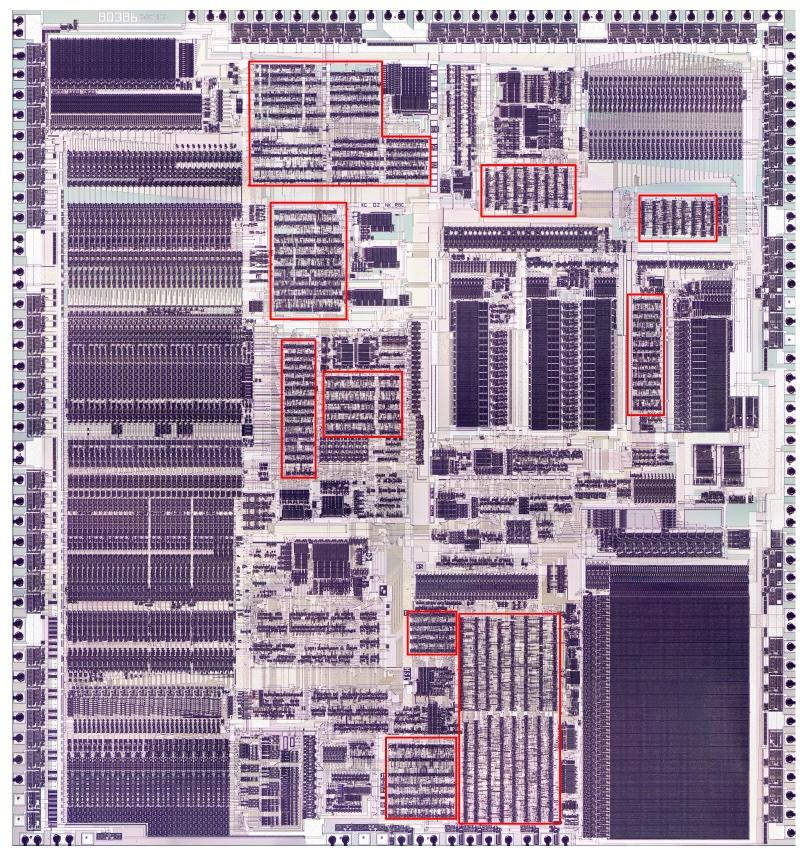
 The 386 was originally scheduled for 50 person-years of development time, but it fell behind schedule. The designers made a risky decision to use "automatic place and route", letting software do some layout. This worked and the chip was completed ahead of schedule. 2/17
The 386 was originally scheduled for 50 person-years of development time, but it fell behind schedule. The designers made a risky decision to use "automatic place and route", letting software do some layout. This worked and the chip was completed ahead of schedule. 2/17

 Most 8086 instructions are implemented in microcode, a level of instructions below the familiar machine instructions. But before microcode can run, something called the Group Decode ROM categorizes instructions according to their structure, shown as colors below.
Most 8086 instructions are implemented in microcode, a level of instructions below the familiar machine instructions. But before microcode can run, something called the Group Decode ROM categorizes instructions according to their structure, shown as colors below. 
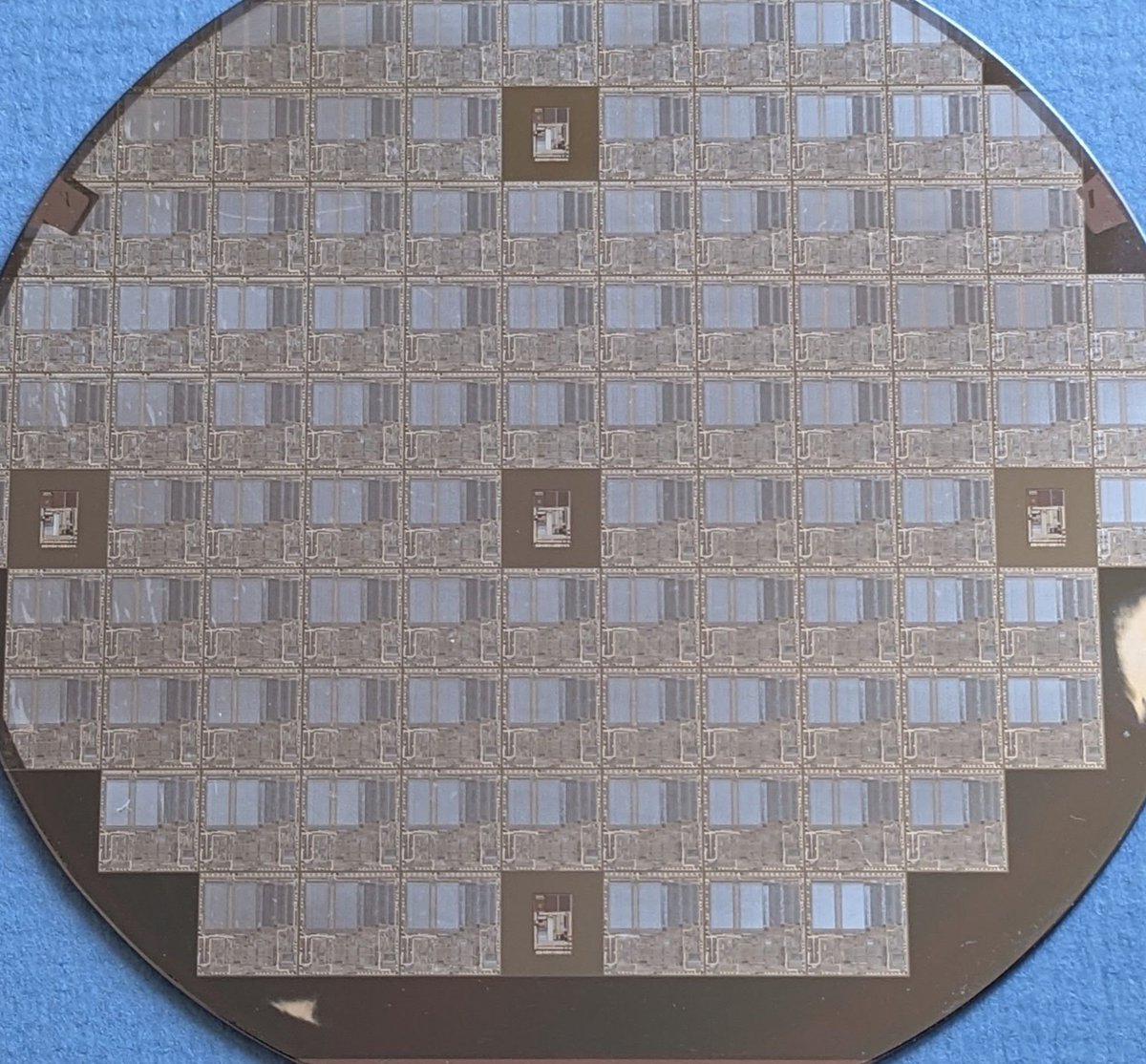
 Creating chips on a silicon wafer is complicated and lots can go wrong. A few test circuits were placed on the die so Intel could check the important characteristics and make sure everything was okay. The white squares are test pads. Tiny probes contact the pads for measurements.
Creating chips on a silicon wafer is complicated and lots can go wrong. A few test circuits were placed on the die so Intel could check the important characteristics and make sure everything was okay. The white squares are test pads. Tiny probes contact the pads for measurements. 

 Planes determine altitude and speed from air pressure readings. But near the speed of sound, things become very nonlinear. As fighter planes became supersonic in the 1950s, the CADC was built to compute these nonlinear functions using rotations of gears and cams.
Planes determine altitude and speed from air pressure readings. But near the speed of sound, things become very nonlinear. As fighter planes became supersonic in the 1950s, the CADC was built to compute these nonlinear functions using rotations of gears and cams. 


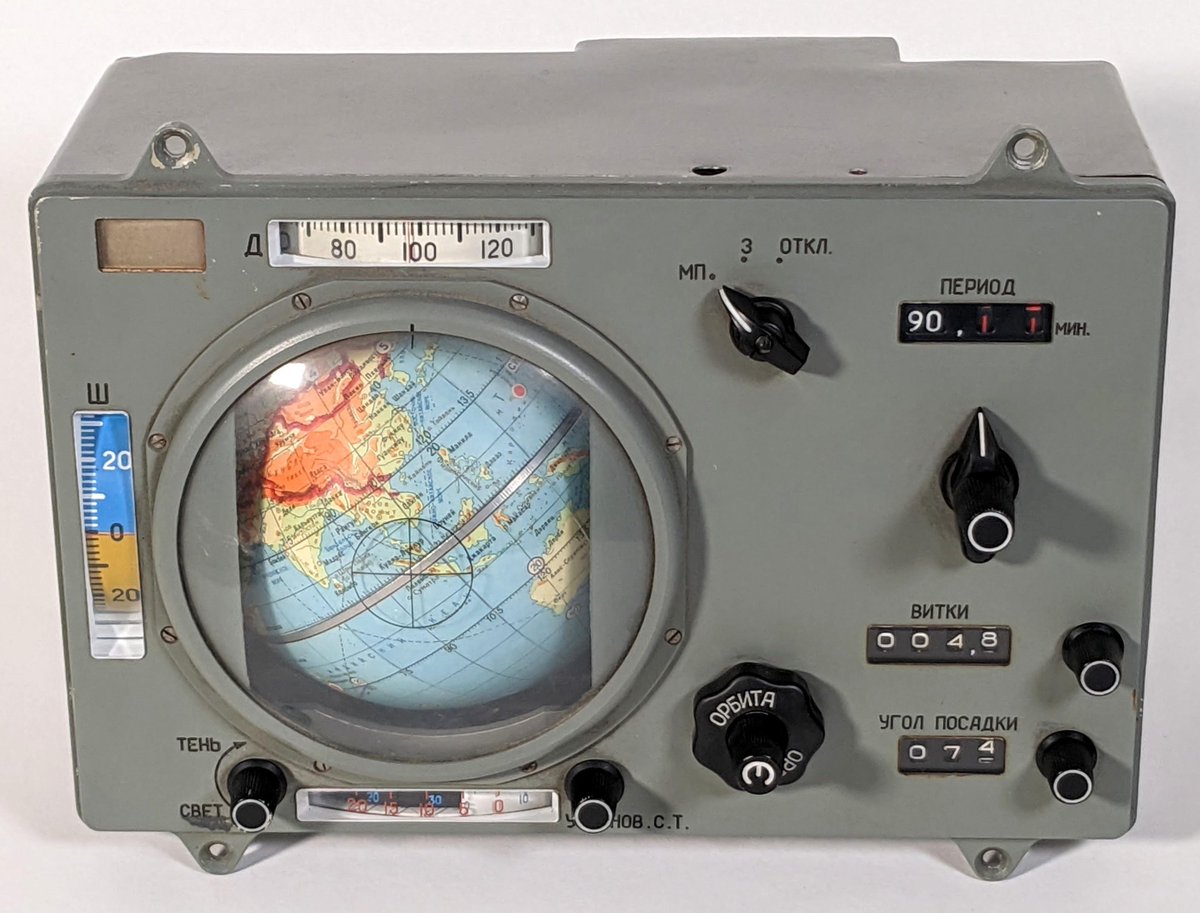

 The key component is a differential gear assembly that adds two rotations. Three spur gears provide two inputs and an output, while the spider gear assembly spins to generate the sum. The differential in your car uses a similar principle.
The key component is a differential gear assembly that adds two rotations. Three spur gears provide two inputs and an output, while the spider gear assembly spins to generate the sum. The differential in your car uses a similar principle. 

 Instructions for the 8086 processor specify registers through 3 bits in the opcode or following byte. This is expanded to a 5-bit code to support 16-bit registers (red), 8-bit registers (blue), segment registers (green), and special internal registers.
Instructions for the 8086 processor specify registers through 3 bits in the opcode or following byte. This is expanded to a 5-bit code to support 16-bit registers (red), 8-bit registers (blue), segment registers (green), and special internal registers. 





 5. When all but one wire in a group of wires switch, that one will switch also.
5. When all but one wire in a group of wires switch, that one will switch also.


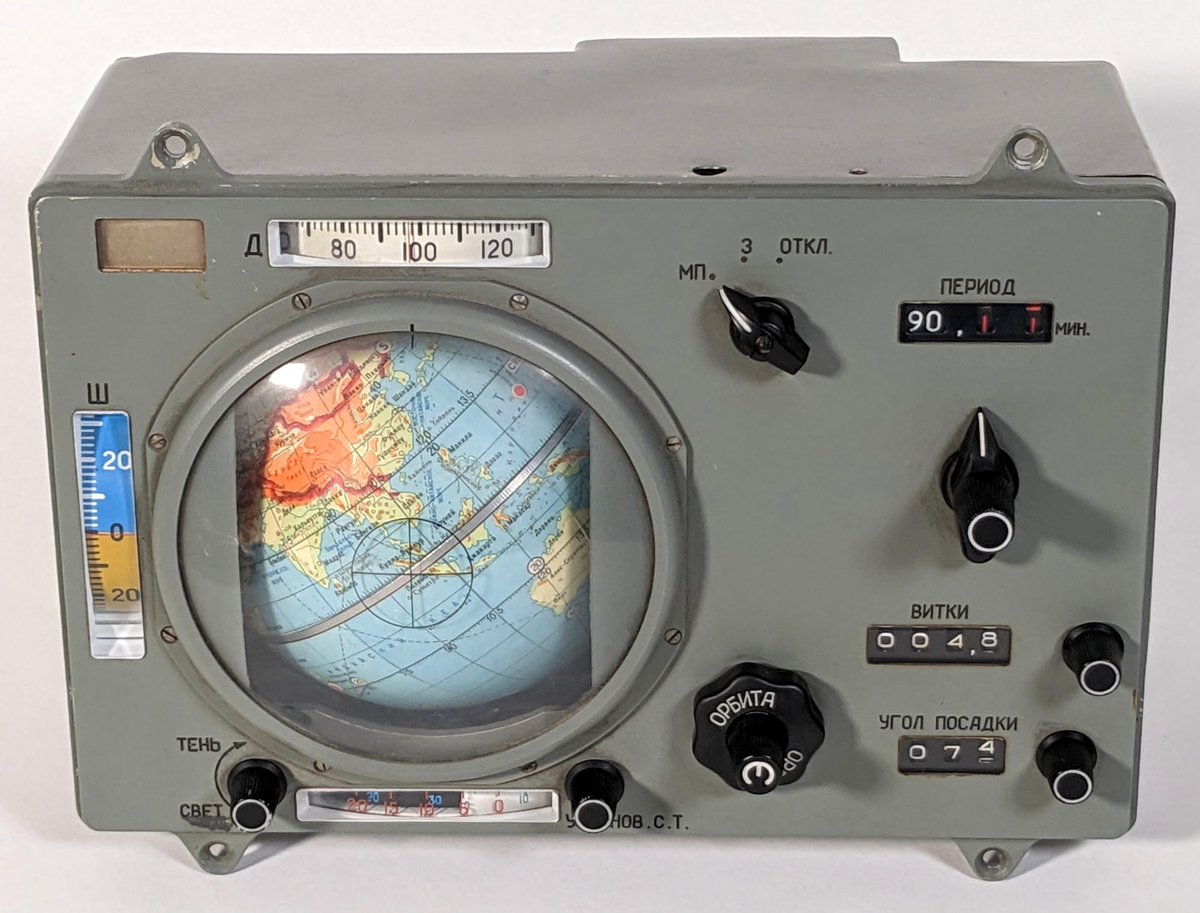
 By flipping a switch on the Globus, the globe rapidly rotates to show the current landing position. This rotation is controlled by a swing arm that moves between two limit switches. One limit switch moves via a knob to control the angle to the landing site.
By flipping a switch on the Globus, the globe rapidly rotates to show the current landing position. This rotation is controlled by a swing arm that moves between two limit switches. One limit switch moves via a knob to control the angle to the landing site. 




 The Globus used complex gear trains driven by solenoids to move the globe.
The Globus used complex gear trains driven by solenoids to move the globe. 


 The 8086 has a 6-byte prefetch queue (photo), which is tiny compared to the megabytes of cache on modern processors, but it increased performance by about 50%. Intel ran a bunch of simulations to decide on the 6-byte queue (4-byte on the 8088 with its narrower 8-bit bus).
The 8086 has a 6-byte prefetch queue (photo), which is tiny compared to the megabytes of cache on modern processors, but it increased performance by about 50%. Intel ran a bunch of simulations to decide on the 6-byte queue (4-byte on the 8088 with its narrower 8-bit bus). 


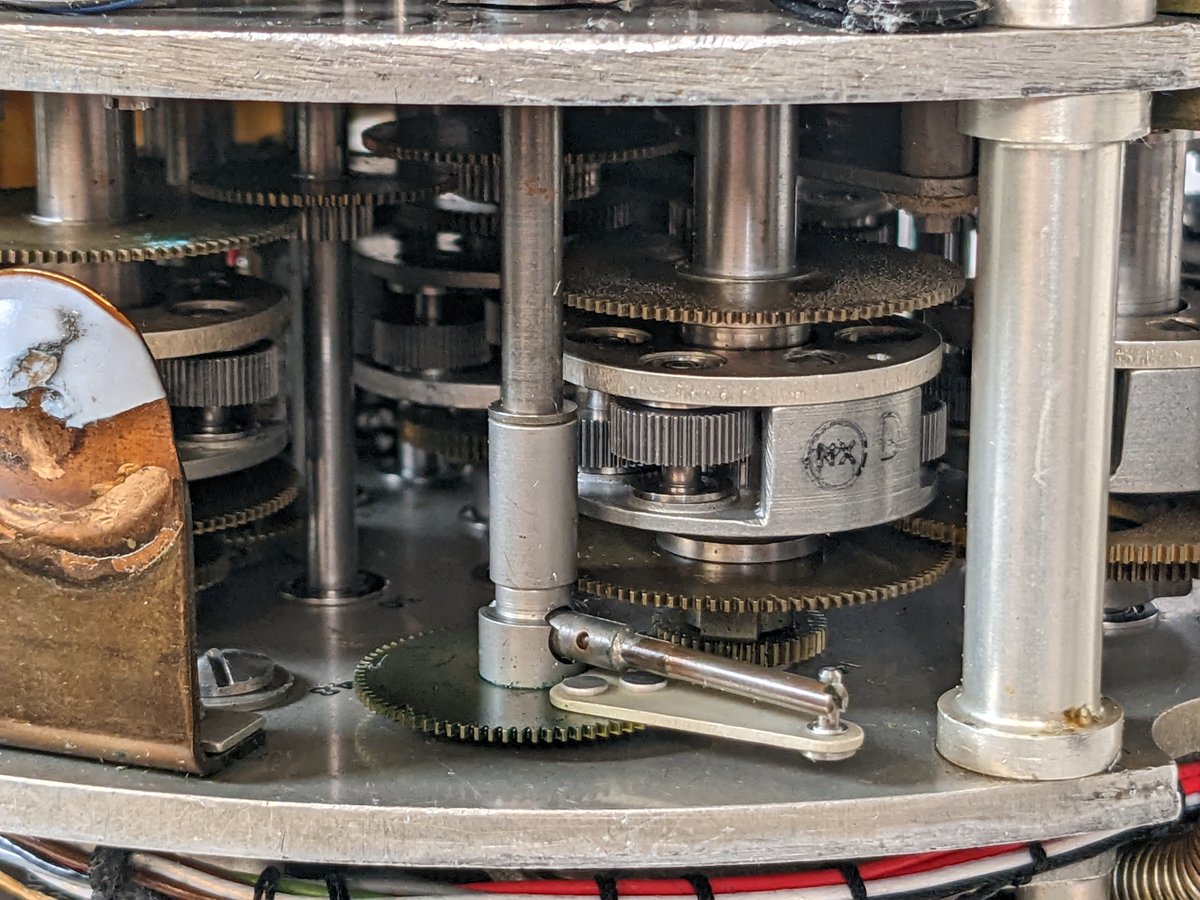
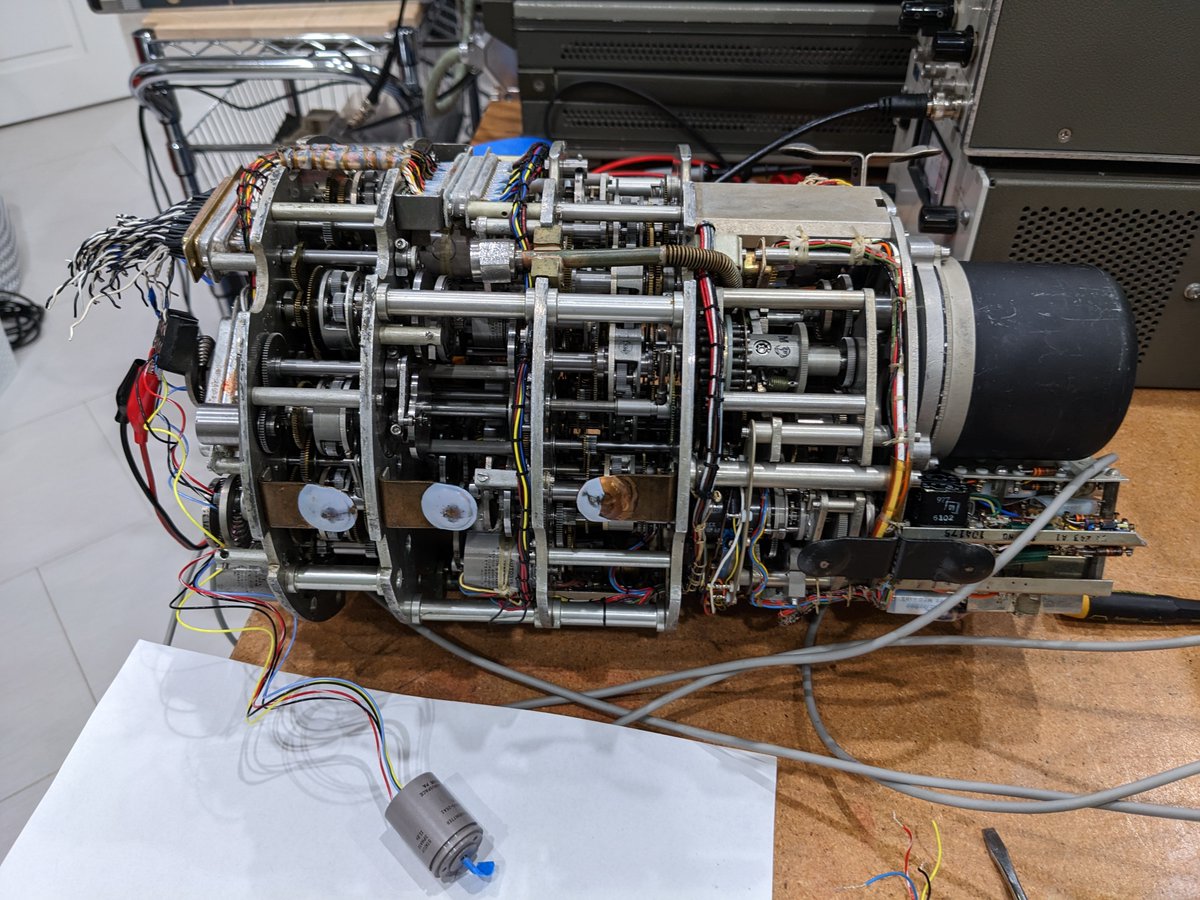 Although the CADC performed computations mechanically, its outputs are electrical. It uses small synchros to convert shaft rotations to three-phase voltages. For accuracy, it uses two synchros for each measurement: coarse and fine.
Although the CADC performed computations mechanically, its outputs are electrical. It uses small synchros to convert shaft rotations to three-phase voltages. For accuracy, it uses two synchros for each measurement: coarse and fine. 






 This analog computer performs calculations using rotating shafts and gears, where the angle of rotation indicates a numeric value. Differential gears perform addition and subtraction, while cams implement functions.
This analog computer performs calculations using rotating shafts and gears, where the angle of rotation indicates a numeric value. Differential gears perform addition and subtraction, while cams implement functions. 





 The HIMARS vehicle holds 6 rockets in a launch pod, which it quickly swivels left and right, up and down to aim at the target. Nicknamed the "70km sniper", HIMARS rapidly fires highly-accurate rockets over long distances and drives away before the enemy can respond. 2/57
The HIMARS vehicle holds 6 rockets in a launch pod, which it quickly swivels left and right, up and down to aim at the target. Nicknamed the "70km sniper", HIMARS rapidly fires highly-accurate rockets over long distances and drives away before the enemy can respond. 2/57 


